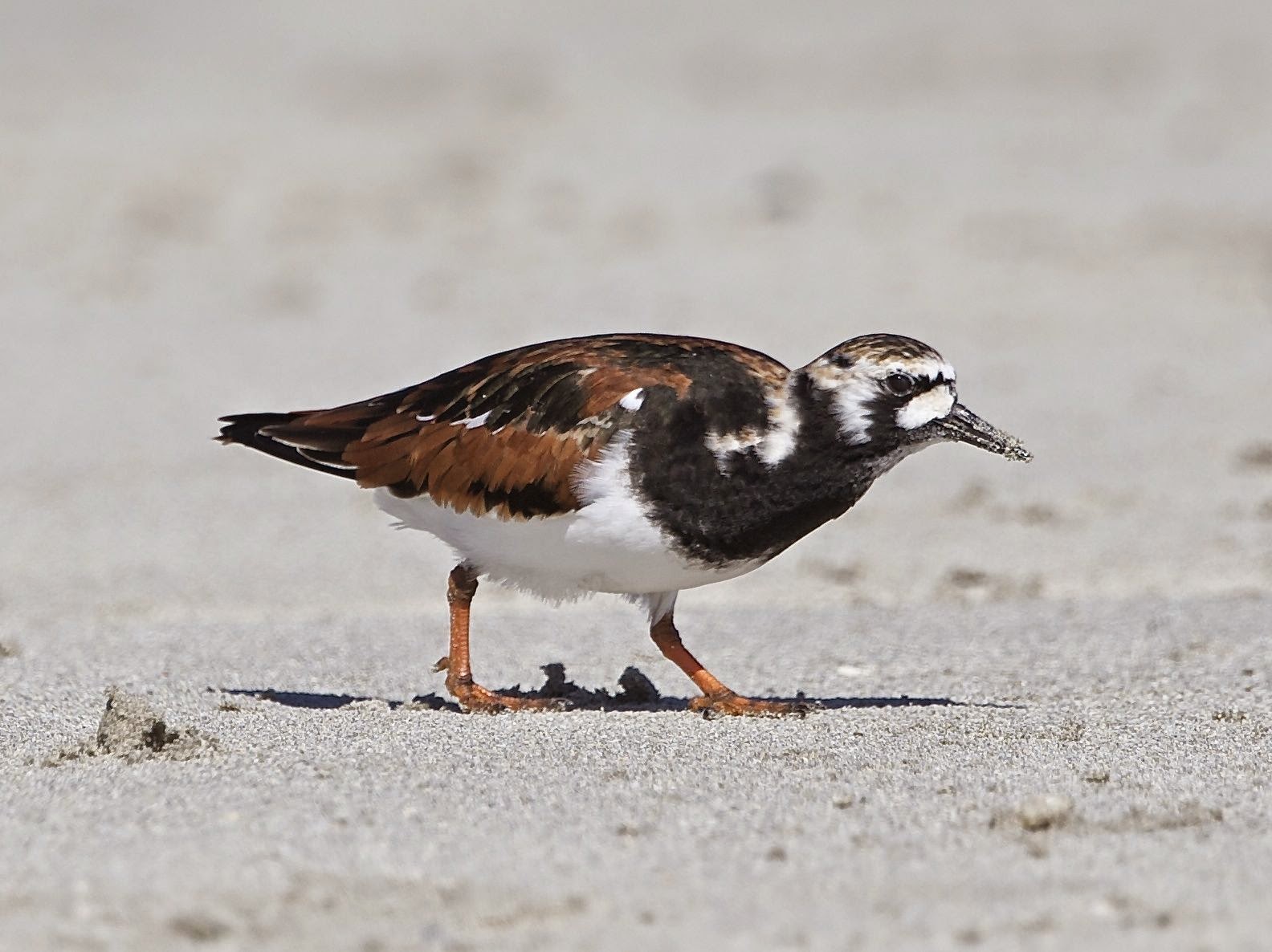Fawthrop Lagoon is located within the
harbor city of Portland on the west coast of Victoria. The lagoon and
surrounding wetland habitat has been developed partly as an urban park and the
remainder has been conserved as water bird habitat where a good range of water
bird species, including migrant shorebirds, may be found.
The lagoon discharges via a tidal creek
into a protected industrial harbour where large ocean going cargo ships come
and go, transporting aluminium (ore and smelted ingots), timber and grain.
Portland is, in part, an industrial city.
On a visit to the park we noticed a family
with young children making their way over a footbridge to a small island. Before
they had crossed the bridge a flock of a dozen or so Mallards swam with obvious
purpose and expectation to meet the family as they came off the bridge. A
similar sized flock of Pacific Black Ducks followed close behind the Mallards.
 |
The Mallards are coming! Four males and one female, part of a flock at
Fawthrop Lagoon Portland, hopeful of a hand out. |
The children were soon throwing pieces of
stale bread to the ducks, a scene that can be witnessed in urban parks all over
the world, because Mallards have a wide distribution across the northern
hemisphere and they have been widely introduced in many countries in the
southern hemisphere including New Zealand and Australia where they were first
introduced from England in the 1860’s.
Mallards as a duck species (Northern
Mallard(1), Anas
platyrhynchos) have adapted very well to urban environments and no doubt
this behavioral trait is partly why so many domesticated duck species
originated from Mallards.
At the park in Portland, the slightly
larger and certainly bolder Mallards outcompeted the Pacific Black Ducks (Anas superciliosa) for the bread scraps
and soon enough the supply of bread was exhausted and the hectic activity
subsided as the family departed. As I moved up with my camera for some photos
the Mallards swam towards me boisterously quaking for food – smart birds, they
soon realised I was not a bearer of food and turned silently away.
As for most introduced species I have to
admit my enthusiasm for photographing the Mallards was not great, though I
concede they are an attractive bird, especially the brightly coloured males.
 |
The attractive male Mallard complete with distinctive curled tail feathers.
The blue speculum, wing-mirror, is covered. |
My interest soon perked up when I noticed
what might have been a hybrid bird among the Mallards and remembered that the Mallards
are a potential threat to our native Pacific Black Ducks as they can cross-breed
with them and therefore there is a risk over time for corruption of the Pacific
Black Duck gene pool. I later discovered that the Pacific Black Duck is a
Mallard and the female Mallard bares a striking resemblance to the Pacific
Black Duck including the facial markings.
 |
| The female Mallard is very similar to the Pacific Black Duck - see next photo for comparison. |
 |
One of the Pacific Black Ducks in flock accompanying the Mallards at Fawthrop Lagoon.
Note the dark mark on the bill tip, Mallards also have the same mark on their bill tip. |
After checking field guides, I decided that
the bird was a female Mallard and not a hybrid and I further concluded that the
birds in the following photo were juvenile Mallards and not hybrids.
 |
| Juvenile or immature Mallards - note the blue wing-mirror is visible on the closest bird. |
Whenever exotic species, plant or animal,
have been introduced, whether deliberately, inadvertently or self introduced,
they nearly always turn out to be a problem as they always disrupt ecosystems,
sometimes subtly and sometimes disastrously. The Mallard probably fits the
subtle end of the impact spectrum, however since their introduction in the
1860’s Mallards have become widespread in Australia, especially around human
development. It is thought that Australia’s harsh drought prone conditions have
limited the spread of Mallards here. In New Zealand where the climate and
conditions are far more benign the Mallard has become far more widespread and some NZ banded
Mallards have been found in Australia showing that they are capable of moving
long distances to new locations and becoming resident there when conditions suit
them.
The biggest threat posed by introduced Mallards in
Australia appears to be hydridisation with our native Pacific Black Ducks!
(1) Regarding “Northern”, Ian Fraser and Jeannie Gray in their book, Australian
Bird Names, A Complete Guide (p17), say “It
is unclear what delineating purpose is served by the relatively recently
adopted Northern descriptor.”
Whether the name Mallard or
Northern Mallard is used, it is the same bird/species.



















































